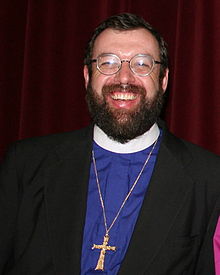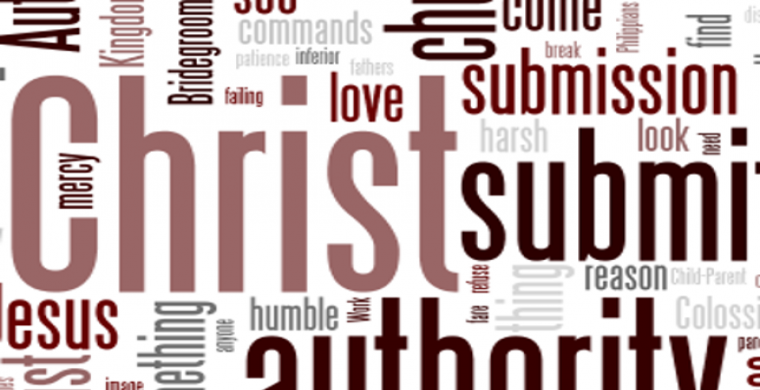The Problem of Authority
By Peter Robinson
http://www.unitedepiscopalchurch.org/
December 20, 2014
One of the frustrating things about Anglicanism in America today is that no-one seems to be too sure what we actually stand for in terms of theology. Terms like 'catholic-lite' and 'reformed Catholic' are bandied about but there seems to be a failure to engage with the actual Anglican theological position as summarized in the Prayer Book, the Articles of Religion, and the Book of Homilies. This is a symptom of the crisis of theological authority which led to the apostasy of the Episcopal Church in the 1970s. However, this crisis was a long time a-coming; not the sudden crisis that many lay folks seem to take it to have been.
Unlike the original 'independent Anglicans' of the Scottish Episcopal Church, many of those who founded the Episcopal Church had their roots firmly planted in the soil of eighteenth century Latitudinarian(1) theology. The original 1785 revision of the Book of Common Prayer was sufficiently liberal (2) that it was rejected by the Archbishop of Canterbury. Needing to secure the Historic Episcopate from the Church of England, White and his supporters produced a second, more orthodox revision of the BCP, and this was accepted by the Church of England. That said, the 1787 PECUSA Constitution and 1789 Book of Common Prayer both vaguely promise to 'not to depart from the Church of England in any essential point of doctrine, discipline, and worship; or further local circumstances require.' (3) However, at the same time, the General Convention loosen the terms of subscription to a promise to abide by the Bible, the two (not three!) Creeds, and by the doctrine, discipline and worship of this Church. All this was in line with Latitudinarian thinking, and was subject to some fairly vigorous opposition from Bishop Seabury and the handful of High Churchmen in the House of Deputies. However, Latitudinarianism was on its last legs, and in 1801, the Protestant Episcopal Church to further committed itself by adopting its own version of the Articles of Religion, which had been the primary declaration of the Anglican position since 1563. The American version omits any reference to the Athanasian Creed, withdraws Article XXI - Of General Councils, and modifies the status of the two Books of Homilies. (4)
Why this delay? Well, it has to be said that the last quarter of the eighteenth century was a somewhat untheological age, and most Anglican Divines were content with the theology of their fathers or their grandfathers. The standard theologians of the time were men like Joseph Butler, Warburton, Burnett, and Tenison - all of whom were inclined to take a broad and rational view of Christianity; what Archbishop Cornwallis, the uncle of the British General who surrendered at Yorktown described as 'a benign of comfortable air of liberty and toleration.' Thus most American Churchmen were of the old Low Church school - theologically a bit vague; liturgically a bit dull; and inclined to prefer the discussion of morals to exposition of theology in the Sunday sermon. However, the moralism and sedentary ways of the eighteenth century were rapidly swept away.
The revival of the Church came from the two ends of the theological spectrum. The diocese of New York replaced the Low Church Samuel Provost, Bishop 1787-1801; first with Benjamin Moore (1801-1816); and then with John Henry Hobart. Moore was a clergyman with a good deal of moral earnestness, and refused to give Alexander Hamilton communion on his deathbed until he had repented of the sin of duelling. Hobart was an energetic and nervous personality, who gave new vigour to tradition High Church ideas. As a result, as the population of the state of New York spread northwards and westwards along the Hudson River and the Erie Canal, the church expanded with the shifting population. Meanwhile in Philadelphia and Baltimore, Evangelical Episcopalians preaching the doctrines of Christ alone, Grace alone, Faith alone, were attracting new people into the Anglican fold. In this period, both side appealed to the Bible, the Prayer Book and the Articles of Religion, but the High Churchmen emphasized the sacramental, the Evangelicals the Protestant side of the Episcopal inheritance. The establishment of General Seminary in 1822, which tended to be High Church, and Virginia Seminary in 1823, which tended to be Low Church Evangelical, tended to reinforce the party differences, and hereafter, the Church in the South would tend to be Broad to Low Church in outlook, but in the North, with the exception of Massachusetts, it would lean in a Broad to High Church direction
Looking back from the 2010s, the Episcopal Church of 200 years ago looks to have a great deal of theological cohesiveness. Both High Churchmen and Evangelicals believed that the Bible was the sole source of Christian dogma, and that tradition and reason (common sense) were useful tools in understanding the sacred deposit of Scripture. The difference were minor, so much so that Pritchard, in his 1987 book, 'A History of the Episcopal Church' describes the two parties as being Evangelical Catholics, and Catholic Evangelicals, pointing out that although party feeling sometimes ran high, there was an underlying unity based on an understanding of the Episcopal Church as an Episcopal and Liturgical Church whose theology was derived from Scripture interpreted in the light of tradition and reason.
So where did it all go wrong?
The major corrosive influence on Anglican orthodoxy in the USA was initially Anglo-Catholicism, which tried to play down the Protestant side of Protestant Episcopal. However, Anglo-Catholicism, at least initially, had more shock value than anything else, and the High Church Movement remained dominated by those who looked not to the Rome, but the Non-Jurors and the Caroline Divines for inspiration. A far more dangerous foe was Higher Criticism of the Bible, which began in Germany in the 1820s, and the Liberal Protestantism that stemmed from it.
Not surprisingly, the Evangelicals were the first to be hit by this new theology. The old Evangelical certainties - an infallible Bible, the five solas of the Reformation (5), and the Substitutionary theory of the Atonement - were all assailed by the new theology which increasingly saw the Bible as 'just another ancient text' and moved away from the hard edged theology of traditional Evangelicalism. In the Episcopal Church, this produced two different movements - liberal Evangelicalism, which was predominant at Virginia Seminary; and Liberal Low Churchmanship, which became the received position at the other traditionally Evangelical seminaries. Conservative Evangelicalism all but disappeared from the Episcopal Church by 1914.
High Churchmen and Anglo-Catholics were less affected by Higher Criticism of the Bible, but it did tend to lead them to exalt tradition - especially in the form of the Seven Ecumenical Councils, and the Early Fathers - to bolster the authority of Christian dogma. The Bible was downgraded from the sole source of dogma, to merely the foundation of Catholic Tradition. By the 1930s, Anglo-Catholic theology depended more on 'consensus catholicism' than on the Biblicism of previous generations of Anglicans. This approach may be fairly represented by Fr. Hall's multivolume 'Dogmatic Theology' which was used as a standard text book at General Seminary, Seabury-Western, and Nashotah for several generation.
Even though the Episcopal Church was drifting into Liberalism, certain clergymen found themselves under censure for going too far too fast. Williams Rainsford, Rector of St George's, NYC, was assailed for describing the Creeds as 'poetic, not literal truth' in 1906. The Rt. Rev. Montgomery Brown was deposed as Bishop of Arkansas, as he increasingly embraced Marxism and recast Jesus as a sort of proto-communist. The Depression and World War II tend to suppress this sort of dissent, but there was still an underlying liberal bias within the Episcopal Church that manifested itself in often liberal stances on the Bible and Social Issues.
By the 1920s Low Churchmen were increasingly promoting a liberal version of Christianity, which tended to minimize the miraculous and the mystical; and play up social concern. High Churchmen emphasized tradition, the priesthood, and the sacraments to compensate for their liberal views on the Bible. With the old threefold authority of Scripture interpreted in the light of tradition and reason shot to threads, the unity of the Episcopal Church increasingly depended on the conservative culture of mid-twentieth century America, and the Book of Common Prayer. When both of these began to breakdown in the 1960s, an already stressed Episcopal Church fell apart completely. As women priests, homosexual priests, divorce and remarriage, and abortion became socially acceptable, so the pressure mounted for the Church to either accept or legalized these innovations. The result of these rising tensions was that many conservative and orthodox Episcopalians became disenchanted, so that my 1965 small groups of 'continuing' or 'traditional' Anglicans were beginning to form congregations outside ECUSA. (6)
However, adhering to 'the revolution before last' did not solve the problem of authority, and the new Continuing Churches were theologically aware enough to realize that this would come back and bite them if they did not do something about it. As a result, a number of Continuing Anglican groups adopted 'Solemn Declarations' which echoed those of the Church of Ireland, and the Church of England in Canada in summarizing their basic principles without an awful lot of elaboration. In general, these documents emphasized a conservative approach to the Bible; acceptance of the Creeds; a male threefold ministry; the traditional understanding of marriage as a life-long indissoluble union between a man and a woman; and condemning abortion whilst at the same time retaining the 1928 BCP and giving a nod to the Article of Religion. However, there was an influential group who wanted to go further than that and remodel Anglicanism. When the 'Affirmation of St Louis' was promulgated in 1977 did not only preserve the traditional Episcopalian tradition, but tweaked a good deal in the direction of Rome, or Eastern Orthodoxy by explicitly describing the Eucharist as a sacrifice, accepting seven sacraments (a common teaching tool, not a dogma in Anglicanism), and making the doctrinal basis of the Church the Seven Ecumenical Councils of the 'Undivided' Church. This produced further tensions between conservative Episcopalians, and Anglo-Catholics, which led to further divisions among traditional Episcopalians.
It seems to me that the United Episcopal Church has chosen a very wise course in refusing to modify its formularies. Like the clergy of the Church of England (and uniquely in the USA), the clergy of the UECNA give their assent to the Thirty-nine Articles of Religion. The UECNA also rejects those innovations in the doctrine, discipline, and worship that have taken place since 1958. As a result we can safely say that the United Episcopal Church remains what Anglicanism has always been - a Catholic and Apostolic; reformed and protestant Church, whose doctrine derives from the Bible interpreted in the light of Tradition and reason, is Episcopal in governance, and liturgical in worship. Having returned to the authentic traditions of the Anglican Church, let us go forward in declaring to men the salvation that comes through Jesus Christ alone.

(1) Latitudinarian or Latitude Men were inclined to minimize the differences between Anglicans and other orthodox protestants, and were the dominant influence in the Mid-Atlantic and Southern States.
(2) For example it omitted both the Athanasian and the Nicene Creed, and also the clause 'He descended into Hell' from the Apostles' Creed.
(3) The Book of Common Prayer p. vi
(4) Ibid pp. 603-611.
(5) Scripture alone; Christ alone; Grace alone; Faith alone; to God alone be the Glory.
(6) The corporate name of the Episcopal Church is 'The Domestic and Foreign Missionary Society of the Protestant Episcopal Church.' Over the years it has operated under a number of "DBAs" - Protestant Episcopal Church of the United States of America (1783-1979); The Episcopal Church, USA (1979-2006); and current as 'The Episcopal Church.'














